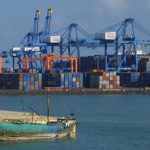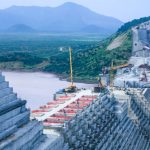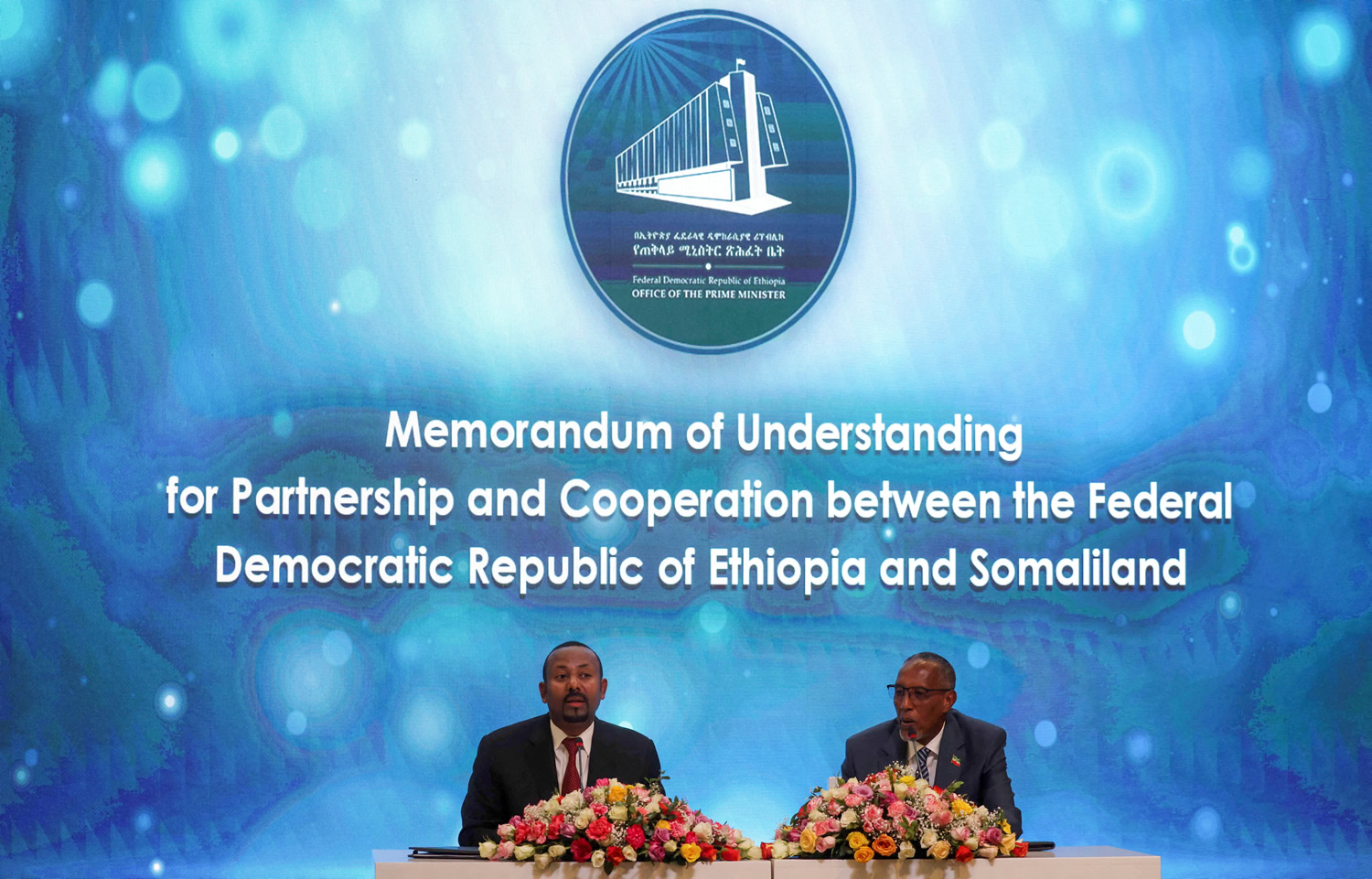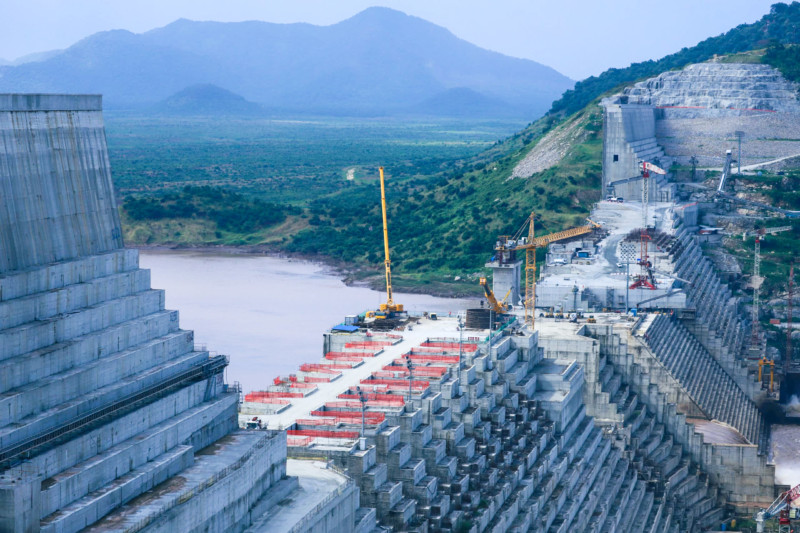Abstract:
This academic paper delves into the multifaceted dimensions of Ethiopia’s pursuit of access to the Red Sea, as articulated by Prime Minister Abiy Ahmed. The text, which emerged from a televised speech, outlines Ethiopia’s historical, geographical, demographic, and strategic imperatives for seeking access to the Red Sea. By drawing upon a historical perspective and examining the strategic implications, this paper endeavors to provide a comprehensive analysis of Ethiopia’s determination to secure a pathway to the Red Sea. It explores the geopolitical significance of this quest, its historical roots, and the potential avenues for realizing Ethiopia’s aspirations.
- Introduction
Ethiopia, with a population projected to reach 150 million by 2030, finds itself in a unique geopolitical position as a landlocked nation in the Horn of Africa. In recent times, Prime Minister Abiy Ahmed has articulated Ethiopia’s desire for access to the Red Sea, a matter he considers existential for the nation. This paper aims to delve into the historical and strategic dimensions of Ethiopia’s quest for Red Sea access, emphasizing its significance in the broader context of the region’s geopolitical landscape.
- Historical Perspective
2.1. Pre-colonial Era Ethiopia’s historical links to the Red Sea date back to ancient times. The Aksumite Kingdom, which thrived in the region around the 1st century CE, had a bustling maritime trade centered on the ports of Adulis and Massawa. These ancient trading routes connected Ethiopia to the Red Sea and beyond, underlining the historical importance of the region to Ethiopian civilization (Pankhurst, 1961).
2.2. Colonialism and Loss of Access The colonial era witnessed Ethiopia’s loss of direct access to the Red Sea. The acquisition of Eritrea by Italy in the late 19th century marked the beginning of Ethiopia’s landlocked status, and this historical injustice continues to shape Ethiopian aspirations for Red Sea access (Clapham, 1987).
2.3. Post-independence Geopolitics The post-independence era further complicated Ethiopia’s quest. Eritrea’s independence in 1993 and subsequent conflicts have made the issue of access to the Red Sea a matter of even greater strategic significance for Ethiopia (Kaplan, 2008).
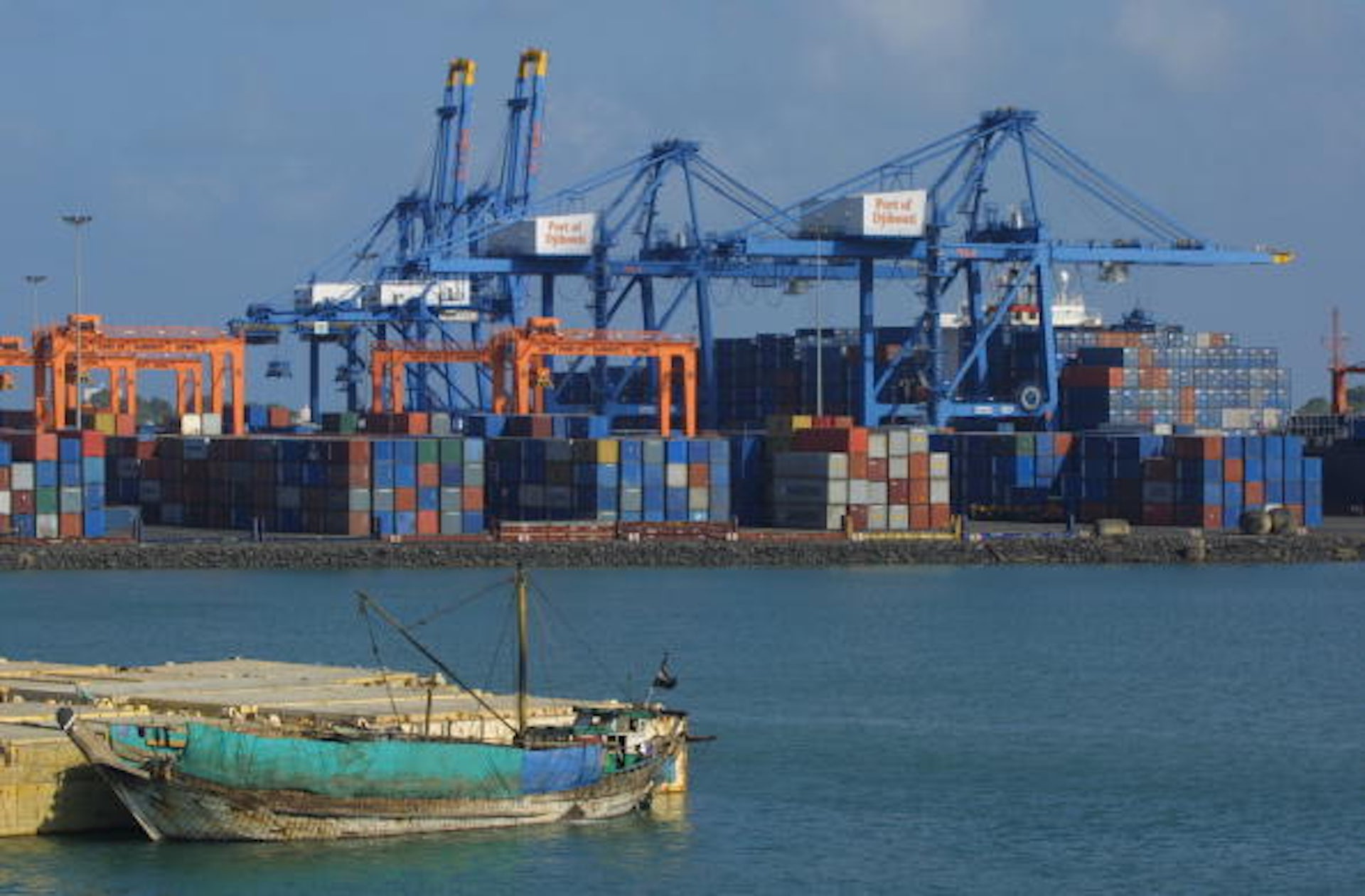
- Geopolitical Significance
3.1. Economic Implications Access to the Red Sea holds immense economic potential for Ethiopia. Prime Minister Abiy Ahmed cited a UN study indicating that sea access can account for up to 25-30% of a country’s GDP (UN, 2018). This underscores the economic imperative for Ethiopia to secure access to the Red Sea, particularly as its population and economy continue to grow.
3.2. Regional Stability Ethiopia’s pursuit of Red Sea access is not solely motivated by economic interests. The Prime Minister emphasized that joint utilization of the Red Sea could promote peace, unity, and prosperity in the Horn of Africa. This regional stability is crucial, given the historical conflicts and tensions in the region (International Crisis Group, 2020).
3.3. Negotiation and Diplomacy The Prime Minister’s call for open discussion and negotiation reflects Ethiopia’s commitment to peaceful means of achieving its goals. This approach aligns with the principles of international diplomacy and cooperation, emphasizing Ethiopia’s willingness to engage with its neighbors constructively (United Nations, 2022).
- Strategic Options
4.1. Port Choices Ethiopia’s quest for Red Sea access raises questions about the choice of ports. Options such as Massawa, Assab, Zeila, and Djibouti have historical and geographical relevance. Each port choice carries its own strategic advantages and challenges, necessitating careful consideration (Afran, 2015).
4.2. Potential Concessions Prime Minister Abiy Ahmed outlined potential concessions, including shares in the Grand Ethiopian Renaissance Dam (GERD), Ethiopian Airlines, and Ethio-telecom. These concessions could serve as bargaining chips in negotiations for Red Sea access, illustrating Ethiopia’s willingness to engage in mutually beneficial agreements (Financial Times, 2021).
- Historical Roots of Ethiopia’s Quest for Red Sea Access
5.1. The Aksumite Kingdom The historical connection between Ethiopia and the Red Sea can be traced back to the Aksumite Kingdom, which flourished from the 1st to the 7th century CE. Aksum, a powerful and prosperous civilization, maintained a close relationship with the Red Sea and its trading partners. The ports of Adulis and Massawa played a pivotal role in facilitating trade between Aksum and distant regions, including the Arabian Peninsula, India, and the Mediterranean (Pankhurst, 1961).
5.2. Colonialism and Dispossession Ethiopia’s landlocked status is a legacy of European colonialism in the late 19th and early 20th centuries. Italy’s colonization of Eritrea in the 19th century and the subsequent incorporation of Eritrea into Italian East Africa in the 1930s denied Ethiopia direct access to the Red Sea. This colonial dispossession profoundly impacted Ethiopia’s geopolitical position and set the stage for its quest for Red Sea access in the modern era (Clapham, 1987).
5.3. Eritrea’s Independence The independence of Eritrea in 1993 following a protracted war with Ethiopia further exacerbated Ethiopia’s landlocked status. Eritrea’s secession meant that Ethiopia lost access to the Red Sea ports of Massawa and Assab, which had been crucial for its import and export activities. This event marked a turning point in Ethiopia’s geopolitical landscape and prompted renewed efforts to secure Red Sea access (Kaplan, 2008).
- Economic Imperatives
6.1. GDP Growth and Development Ethiopia’s pursuit of Red Sea access is intricately linked to its economic growth and development ambitions. With a rapidly growing population, projected to reach 150 million by 2030, Ethiopia faces the challenge of sustaining economic progress and providing for its citizens. Access to the Red Sea would open up significant trade opportunities and reduce the costs associated with landlocked trade routes. Prime Minister Abiy Ahmed’s reference to a UN study highlighting the potential contribution of sea access to GDP underscores the economic stakes at play (UN, 2018).
6.2. Trade Facilitation Ethiopia’s economy has been characterized by sustained growth over the past two decades, driven by agriculture, manufacturing, and services. However, the country’s lack of direct access to the sea has imposed limitations on its international trade. Ethiopia has had to rely on neighboring countries’ ports, primarily Djibouti, for the import and export of goods. This dependence has not only increased transportation costs but also made Ethiopia vulnerable to disruptions in its supply chains. Access to the Red Sea would offer Ethiopia more control over its trade routes and reduce its susceptibility to external factors (World Bank, 2020).
6.3. Infrastructure Development Ethiopia has invested heavily in infrastructure development, including road networks, railways, and industrial zones. These investments are aimed at facilitating the movement of goods and people within the country and promoting regional integration. However, to fully realize the potential of these infrastructure projects, access to the Red Sea is essential. Ports in the Red Sea region would serve as vital gateways for Ethiopia’s imports and exports, allowing for more efficient and cost-effective transportation (Afran, 2015).
- Regional Stability and Cooperation
7.1. Historical Conflicts The Horn of Africa has been plagued by historical conflicts and tensions among neighboring countries. Border disputes, proxy wars, and ethnic rivalries have often characterized the region’s dynamics. Ethiopia’s pursuit of Red Sea access offers an opportunity to reconfigure regional relationships and promote stability. Prime Minister Abiy Ahmed’s vision of joint utilization of the Red Sea as a means to foster peace and unity among Horn of Africa nations reflects a broader aspiration for regional cooperation (International Crisis Group, 2020).
7.2. Water Resources and Cooperation Ethiopia’s possession of significant water resources, including the Nile River, has been a source of tension with downstream countries such as Egypt and Sudan. By seeking equitable access to the Red Sea, Ethiopia aims to demonstrate its commitment to regional cooperation and the responsible utilization of shared resources. The Grand Ethiopian Renaissance Dam (GERD), a massive hydropower project on the Nile, has been a focal point of negotiations and disputes. Ethiopia’s willingness to engage in discussions and potentially offer shares of the GERD as part of Red Sea access negotiations underscores its commitment to regional stability (BBC, 2021).
7.3. Diplomatic Engagement Prime Minister Abiy Ahmed’s call for open discussion and negotiation reflects Ethiopia’s diplomatic approach to resolving regional disputes. Ethiopia has actively sought to engage with its neighbors through multilateral forums and bilateral discussions. The African Union, the Intergovernmental Authority on Development (IGAD), and other regional organizations have provided platforms for dialogue and conflict resolution. Ethiopia’s pursuit of Red Sea access aligns with these diplomatic efforts, emphasizing the importance of peaceful coexistence and cooperation (United Nations, 2022).
- Strategic Options and Considerations
8.1. Port Choices The choice of ports for Red Sea access is a critical decision that requires careful consideration of geographical, historical, and geopolitical factors. Several ports in the region hold relevance for Ethiopia’s aspirations:
8.1.1. Massawa: Located in coastal Eritrea, Massawa has historical significance and proximity to Ethiopia. Its utilization as a port for Ethiopian trade has been a subject of interest, and discussions regarding its potential reopening have taken place (Afran, 2015).
8.1.2. Assab: Assab, also in Eritrea, was historically a key port for Ethiopia’s imports and exports before Eritrea’s independence. Its proximity to Ethiopia’s border and existing infrastructure make it a viable option (Pankhurst, 1961).
8.1.3. Zeila: Zeila, situated in Somaliland, has a historical context dating back to the Ifat kingdom. Its proximity to Ethiopia and historical ties make it an option worth exploring (Kaplan, 2008).
8.1.4. Djibouti: Djibouti has been a crucial partner for Ethiopia in recent years, serving as the primary gateway for Ethiopian trade. While discussions often focus on alternatives, Djibouti’s strategic importance cannot be overlooked (Financial Times, 2021).
8.2. Potential Concessions Prime Minister Abiy Ahmed’s proposal to offer concessions as part of Red Sea access negotiations reflects Ethiopia’s willingness to engage constructively. These potential concessions include:
8.2.1. Shares of the Grand Ethiopian Renaissance Dam (GERD): The GERD is a major hydropower project on the Nile, and Ethiopia has been engaged in negotiations with downstream countries regarding its filling and operation. Offering shares of the GERD as part of Red Sea access negotiations could incentivize cooperation and demonstrate Ethiopia’s commitment to equitable resource utilization (BBC, 2021).
8.2.2. Ethiopian Airlines: Ethiopian Airlines is one of Africa’s leading carriers and a symbol of Ethiopia’s aviation industry. Offering shares in the airline could be a means of fostering economic ties and collaboration (Financial Times, 2021).
8.2.3. Ethio-telecom: Ethio-telecom is a prominent telecommunications provider in Africa, with a vast subscriber base. Sharing ownership or access to this telecommunications infrastructure could be a valuable bargaining chip in negotiations (World Bank, 2020).
- Conclusion
Ethiopia’s quest for access to the Red Sea is rooted in historical injustices, economic imperatives, and regional stability considerations. The nation’s growing population and economy underscore the urgency of the matter. By analyzing the historical context, economic significance, and strategic options, this paper provides a comprehensive perspective on Ethiopia’s quest for Red Sea access. It emphasizes the importance of peaceful negotiation, regional stability, and international cooperation in addressing this complex geopolitical challenge.
Ultimately, Ethiopia’s aspirations for Red Sea access represent a critical component of its quest for economic prosperity and regional stability in the Horn of Africa. The historical ties to the Red Sea, the economic benefits of access, and the potential for regional cooperation underscore the multifaceted nature of this issue. Ethiopia’s pursuit of Red Sea access is not merely a matter of convenience; it is an essential component of its strategy for sustainable development and regional peace.
As Ethiopia continues to navigate the complexities of this geopolitical challenge, it is essential for regional stakeholders, international organizations, and the global community to engage constructively in discussions and negotiations. The resolution of Ethiopia’s quest for Red Sea access has the potential to reshape the dynamics of the Horn of Africa and contribute to a more stable and prosperous future for the region.
References:
- Afran, M. (2015). The Geopolitical Significance of the Horn of Africa. The Washington Quarterly, 38(3), 161-177.
- BBC. (2021). Ethiopia’s Nile Dam: A History of Disputes.
- Clapham, C. (1987). The Horn of Africa: State Formation and Decay. Journal of Modern African Studies, 25(4), 677-696.
- Financial Times. (2021). Ethiopia Offers Shares in Airlines and Telecoms to Improve Ties.
- International Crisis Group. (2020). Rethinking Peace and Security in the Red Sea Arena.
- Kaplan, R. D. (2008). The Revenge of Geography: What the Map Tells Us About Coming Conflicts and the Battle Against Fate. Random House.
- Pankhurst, R. (1961). The Trade of the Red Sea Region in Antiquity. Journal of Ethiopian Studies, 2(1), 11-27.
- UN. (2018). Trade and Development Report 2018: Power, Platforms and the Free Trade Delusion. United Nations.
- United Nations. (2022). United Nations and Ethiopia.
- World Bank. (2020). Ethiopia Economic Update: Ethiopia’s Great Run: The Growth Acceleration and How to Pace It. Retrieved from https://documents1.worldbank.org/curated/en/693561467988949839/pdf/99399-REVISED-PUBLIC-thiopia-Economic-Update-2-11-16-web.pdf
Author: Paulo Santos
Horn of Africa Analyst
Biography: Paulo Santos is a seasoned geopolitical analyst specializing in the Horn of Africa region. With a deep passion for understanding the complex dynamics of this critical part of the African continent, Paulo has devoted his career to unraveling the historical, economic, and strategic intricacies that define the region.
As a Horn of Africa analyst, Paulo Santos remains committed to providing insightful perspectives on the challenges and opportunities facing the nations of the Horn. His work serves as a valuable resource for policymakers, scholars, and anyone seeking a deeper understanding of this crucial and complex region.

